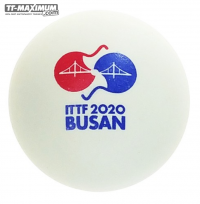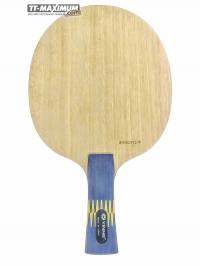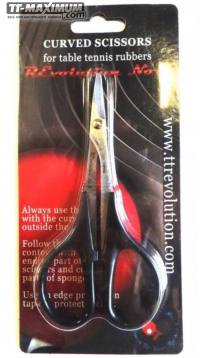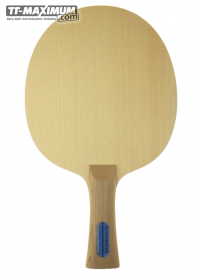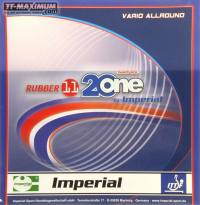Перевод этой статьи можно прочитать здесь.
I'm a twiddler myself, and I would like to share how the game has changed to me since I started playing a combination racket and twiddling (I started doing both things at the same time about 8 months ago). I was playing inverted both sides before, and I enjoyed the game, but twiddling really raises to a new level game tactics, and TT is all about tactics. Twiddling is the ultimate tactical game, and is also a lot of fun, since you can do much more things that a player using the same rubber on both sides.
On Combination Rackets
There are several kinds of rubbers that can be used to play, according to the rules: Pips out (short, medium, long), inverted or antispin. Players choose any two of this surfaces, one for forehand and one for backhand. A combination racket is a racket that has 2 different kind of surfaces. These are the combos I recommend, ordered from most to less effective:
1 - long pips & inverted -> Allows strong attack and good defense
2 - long pips & short pips -> good for a block & hit attack and defense game
3 - inverted & antispin -> good allround control game
4 - short pips & antispin -> good for a control & counterattack no spin game
5 - long pips & antispin -> strong defense
There are others, of course, but those above are the best to play a twiddling game. Have in mind that long pips can be attacking or defensive, so you can choose what flavor you like. Note that you can change long pips on the list above by medium pips if it suits your style (but that kind of combos could not be as effective in my opinion). Also inverted can be sticky or 'regular', and more suited for attack or defense. This gives you a wide range of equipment from which to choose.
The Art Of Twiddling
Twiddling is the skill of switching the side of the racket used to hit the ball during rally. When playing with a combination racket, this forces the player twiddling to have 2 sets of strokes for forehand, and 2 sets of strokes for backhand (as he'll be using 2 different rubbers on both forehand and backhand). This 2 sets of strokes are more different when more different are the rubbers. This is as (technically, tactically) demanding as it seems. It will take you some time to play efficiently both sides and both rubbers, but it sure pays. The player twiddling knows what rubber he has used for his last stroke, what rubber is on his backhand and on his forehand, and tactically decide what rubber is going to use for his next stroke(s) during the rally, and how is he going to manage the following balls in the rally. The twiddling player has to be able to attack and defend, switching tactically between both. If he can both attack and defend with 2 different surfaces, he is a tough opponent. I believe the best grip for twiddling is shakehand, but penhold or seemiller can also twiddle decently.
Limitations of a twiddling style
Some players think twiddling has some limitations or complain on certain things, the most common being:
1 - 'You can be caught with the wrong rubber on the wrong side':
This is not accurate. A decent twiddler should be a able to play both rubbers both sides when facing any style, so there is no 'wrong' side. Twiddling is not a good tactical option if you want to cover some weakness on inability.
2 - 'Twiddling is not effective any more since the two color rule':
With one color rackets twiddling was done to fool opponents, taking profit of the inability of opponents to read spin. With two color rackets, winning by twiddling takes skill at any level. Two color rule got rid of the 'deception' (well still there are lots of opponents that can't play against other surfaces that inverted, and that any combination racket player or chopper can give a lot of troubles without twiddling) but a twiddler has to win by skill the players who can play against any surface (and this are the wins that count).
3 - 'You can't attack with long pips or anti, you are forced to defend':
This is false. Some long pips or antispin can hit very well. Spin reversing rubbers can hit or loop very well against underspin. Pips out allow to take the ball off the bounce and play wide angles...
4 - 'You don't have strong defense with inverted. You can only block':
Not true. Is difficult to play a chopping game with inverted (especially on the BH), but it can be done. Some modern choppers use inverted on his backhand. Well, if you (the twiddler) are far from table, you should have time to twiddle to your pips side and chop, if you are near the table, can still block.
5 - 'Inverted rubber is superior to long pips or antispin':
That's absolutely right. Inverted rubbers do offer capabilities far beyond than long pips or anti, specially since the aspect ratio rule and the 40mm ball. But I believe that a racket with 2 inverted rubbers is not superior than a racket with (let's say) 1 inverted + 1 long pips, if the last one is properly twiddled, because it can play as inverted AND long pips. If you can pick what shots are you doing with one or the other surface, you have more weapons and a wider shot and tactical selection.
Advantages Of Twiddling
1- You can play various styles at the same time:
That's an important advantage, since most (if not all) players do better or worse depending the opponents style. The allround looper player uses only 40-60% of table tennis strokes, and a very aggressive player, who goes for serve & 3rd ball attack uses only 10-20%.
2 - Emphasizes rallying:
This leads to longer points and this to have lots of fun. The more defensive rubbers are in play, the longer the rallies will be. Just make sure that you can end points quickly if you need so.
3 - Strong attack and strong defense capabilities:
I believe that this style is competitive at any level. Some top players do twiddle (but they are too defensive-oriented to get to the top, in my oppinion) - Easy to do, powerful and quick switch between attack and defense.
4 - Opponents can be unfamiliar to your style or equipment:
You know what this means.
5 - Twiddling can be made in a very unpredictable manner, if you are used to both surfaces enough:
This leads to control the game pace, and this to impose your game. Also, it's hard to develop tactics against an unpredictable player, let alone an unpredicable twiddler.
6 - It's easy to develop tactics with it:
No further explanation needed.
7 - Easy serve return, or control of spiny shots if you have a control or defense rubber:
You should be able to use any surface to return a serve. But it's true that some rubbers allow for greater error margins, and you can take profit of this.
You Can Be A Twiddler Too!
If you are a combination player, you could try twiddling for a while and see if it works for you. There is nothing wrong in trying. Think you can use your slower rubber to do drop shots, your spiny rubber to serve, your pips out to flat kill, your inverted to loop, and so on... and that's on both forehand and backhand!



